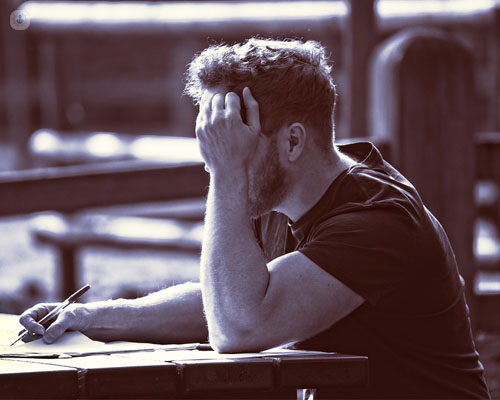

What can cause elbow pain?
The elbow is a complex joint formed by bones, cartilage, ligaments and fluids. The muscles and tendons help to move the joint and if any of these parts suffers any damage, the pains and problems appear.

Elbow pain can occur as a result of:
- Muscle strain or sprain – the muscles or ligaments in your elbow can be strained from overexertion. However, with rest and proper support, they should heal over time sand your symptoms should improve.
- Bone fracture – this usually occurs as a result of playing sport or a fall, and is a sudden injury. You may still be able to move the elbow but it will be painful to do so. It’s important to seek medical help if you suspect you’ve had a fracture, as leaving the elbow untreated can lead to the bones not healing properly
- Dislocation – this occurs when one of the bones in the elbow moves out of place, causing significant pain. You should get medical help for a dislocated elbow immediately.
- Tendinitis – certain movement, such as arm movements involved in playing golf (golfer's elbow or medial epicondylitis) or tennis (tennis elbow or lateral epicondylitis), can result in the tendons in your elbow becoming inflamed from overuse. These injuries are not limited to sports players – they can happen to anyone who frequently carries out a similar arm movement, such as at work.
- Bursitis – another injury from repetitive arm movement, where sacs containing fluid become swollen and cause pain in the elbow.
- Arthritis – both osteoarthritis (wear and tear of the cartilage in your elbow) and rheumatoid arthritis (a condition causing inflammation in your joints) can result in joint pain in the elbow. In this situation a rheumatologist will recommend the best treatment.
- Trapped nerve – everyone has a number of nerves travelling down the arm, through the elbow and the hand. Sometimes a nerve can get trapped in the elbow, causing constant pain and some tingling. This can also cause similar symptoms in the hand and fingers.
Who should I see about elbow pain?
You should see your GP in the first instance, who is likely to refer you to a specialist rheumatologist for pain management, or possibly an orthopaedic surgeon if surgery is required. As part of your diagnosis, imaging tests (such as an X-ray or MRI) may be required.
The relevant specialist will coordinate your care, which may involve:
- medication
- physical therapies, including rest, ice, ultrasound and massage
- accupuncture laser therapy (this aims to stimulate the release of serotonin and endorphins, resulting in pain relief and improved mood, sometimes negating the need for taking NSAIDs)
- splints and other support for the elbow
If no improvement is seen in the patient's elbow pain, then the following treatments may be required:
- anti-inflammatory injections
- in severe cases, elbow surgery
